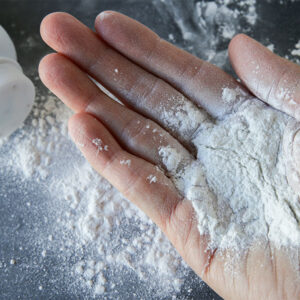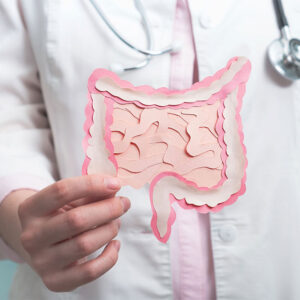
Is This Sugar Actually a Health Food in Disguise?
It’s happening.
Christmas cookies have begun to flood the office kitchen.
Between holiday parties, gifts from clients, and Christmas baking, December and January can be the most sugar-loaded months of the year.
And that can be OK, really! Indulging in sugar occasionally is typically not a problem for most people.
But when it becomes a daily habit, it can lead to not only weight gain, but serious nutrient deficiencies.
You already know that sugar is a source of empty calories. But what you may not know is that sugar consumption actually causes nutrient loss in our bodies.
It does this one of two ways.
First, it reduces our ability to absorb other nutrients. Fructose, for example, can decrease the expression of an enzyme that helps us synthesize vitamin D from the sun.
The absorption of vitamin C can also be reduced from a high-sugar diet. Both glucose and vitamin C use the same receptors to enter our cells, so when too much glucose is present, it will limit the amount of vitamin C that is absorbed.
Inadequate levels of vitamin C can eventually lead to decreased immune function. This may be why research has shown just 100 grams of sugar can decrease immune function by up to 50%![1]
(Interestingly, in this study, they measured the effects of pure glucose, fructose, sucrose, honey, and orange juice on immune function. All decreased immune function significantly for up to five hours after ingestion. So if you’ve been chugging orange juice to combat a cold, you may want to rethink that.)
The second way sugar causes micronutrient deficiency is by causing our bodies to rapidly lose certain nutrients. It increases the degradation of vitamin D and increases the excretion of calcium, magnesium, and chromium.
Magnesium and chromium are important for insulin response and blood sugar control. So a loss of these minerals can lead to a downward spiral of high blood sugar and increased sugar cravings, leading to even more nutrient loss.
There is one sweetener, however, that is so nutrient dense that not only can it help combat some of these nutrient deficiencies, but one could actually consider it a health food: blackstrap molasses.
Molasses is created during the sugar refining process. As sugar cane or sugar beets are boiled, the sugar crystals condense and are able to be extracted. That’s the white stuff you can buy in paper bags at the grocery store. All of the vitamins and minerals from the plant remain in what’s left over: the molasses.
There are three types of molasses. The variations depend on how many times the cane or beets have been boiled. The first round of boiling creates light molasses, the second creates dark molasses, and the third round creates blackstrap molasses, the thicker, darker, most nutrient-dense type.
In fact, look at how many minerals (and a few vitamins) are packed into just one tablespoon of blackstrap molasses:

So even though you won’t get any vitamin C or D from molasses, you can see it is still a powerhouse of other minerals that are depleted with sugar consumption.
Blackstrap molasses has slightly fewer calories compared with table sugar (42 versus 48 per tablespoon), but it has a much lower glycemic index. The glycemic index (GI) is measure of a food’s ability to rapidly increase blood sugar — the higher the GI, the faster and higher the spike in blood sugar.
Pure glucose has the highest GI, at 100. Refined table sugar has a GI of 80, and molasses has a GI of 55, indicating it has a lesser effect on blood sugar levels.
So if you’re going to indulge in a sweetened treat, try using blackstrap molasses! While all added sugars should be consumed in moderation, this is one sweetener you can actually feel good about using.
Most grocery stores should carry blackstrap molasses, and you can buy it on Amazon here. Make sure you buy the unsulphured variety; this means the product has not been processed with sulfur dioxide, which can be allergenic to people with sulfite sensitivities. Sulphur dioxide also gives the molasses a more chemical taste.
Though it does has a strong flavor, this refined-sugar substitute is surprisingly versatile. Aside from making traditional molasses cookies, there are a plethora of recipes on the Web for grain-free paleo versions, like these ginger snap cookies made with almond flour.
You can also use it in meat dishes like pulled pork spareribs, pork sausage, and Korean beef, or make your own blackstrap BBQ sauce.
Or maybe try making this paleo molasses sweet potato casserole for your next holiday meal. There’s also a version of pomegranate-infused molasses used in a tasty-looking glazed salmon recipe.
To eating well,

Jasmine LeMaster
Health Researcher
P.S. In case you missed them, check out these Living Well Daily articles on the sugar alternatives xylitol (here) and stevia (here, here, and here).
View More Free Articles
The Secret Ingredient to a Longer, Happier Life
Let’s face it. We’re all in need of an attitude adjustment from time to time. After all, when you turn on the news these days, the world can seem pretty dark. That is unless you make it a practice to look for the silver linings. In fact, Harvard researchers say when you do, something quite...
Do You REALLY Need All Those Skincare Products?
I often get questions about skincare products—and here’s what I’ve learned. In today’s beauty-obsessed world, it’s easy to fall into the trap of spending hundreds every month believing you need countless products to fight aging and achieve healthy, glowing skin. However, many dermatologists argue that LESS is MORE when it comes to skincare. Simplifying your...
“Ebb and Flow” Technique TRANSFORMS Senior Brain Health
You know by now that exercise is good for you. It keeps your heart healthy, your muscles strong, and your waistline trim. But what if I told you that a trendy “ebb and flow” workout technique—often associated with young fitness enthusiasts—could actually be a game-changer for us “oldsters” when it comes to brain health? And...
Mailbag: Slash Your Risk of Bone Fractures as You Age
“My doctor recently told me that I have osteoporosis. What can I do to reduce my risk of fractures and maintain strong bones as I age?” – Margaret Hi Margaret, Sorry to hear about your diagnosis. I’m sure it was a shock. Osteoporosis is a serious condition that affects millions of people, and it’s not...
Household Favorite EXPOSED as Cancer Risk?
We all want to believe that the products we use daily are safe. After all, if they weren’t, they wouldn’t be on store shelves, right? Well, I hate to break it to you, but sometimes, the truth is far more alarming than we’d like to admit. The World Health Organization (WHO) has just dropped a...
Hidden Heatwave Threat REVEALED
Heat waves can have serious consequences. After all, staying cool isn’t just a comfort issue. When the mercury soars, it threatens your health—especially when you’re a senior. There are various reasons for this, including chronic medical conditions and bodies that just don’t regulate temperature as well as they once did. But there’s another heat-linked threat...
The Hidden Threat Behind Your Achy Joints
Picture this… You’re trying to enjoy a leisurely stroll in the park, but each step sends a jolt of pain through your knee. Or maybe you’re attempting to open a stubborn jar lid, only to have your fingers refuse to cooperate, leaving you feeling frustrated and helpless. Perhaps you’re simply trying to get out of...
Parkinson's Signs You Can't Afford to Miss
Imagine waking up one day to find your body betraying you. Your hands tremble as you try to button your shirt. Your feet shuffle when you want to walk with purpose. Once strong and clear, your voice now barely reaches above a whisper. This is the reality for those living with Parkinson’s. But what if...
Do Protein Needs Drop with Age? The SURPRISING Answer
I had a patient ask me the other day if they needed as much protein now as when they were younger. After all, we aren’t quite as active as seniors compared to when we were spring chickens. It’s a good question. And the answer might surprise you… Remember when you could devour a whole pizza...
Follow Your “Gut Feeling” to Reduce Diabetes Risk
It seems like every day we learn something new about the incredible influence our gut has on our overall health. From mood to immunity, and even to how well we sleep, the community of microbes in our digestive tract is pulling the strings behind the scenes. So, it should come as no surprise that researchers...









